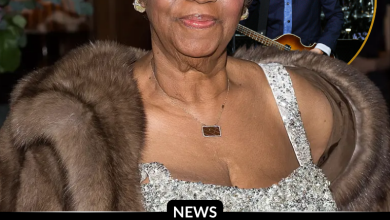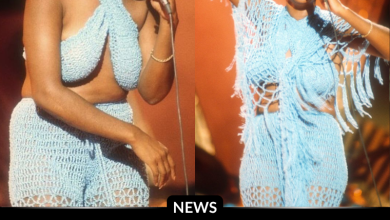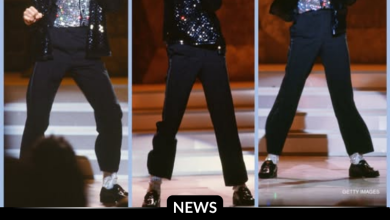Why Audrey Hepburn Passed on Gigi to Star with Fred Astaire in Funny Face
OPINION: This article may contain commentary which reflects the author's opinion.
Audrey Hepburn, one of Hollywood’s most beloved and elegant actresses, made a career of gracefully balancing her acting talent, stunning looks, and unique charm. By 1956, she was a well-established star, with iconic roles in Roman Holiday (1953), Sabrina (1954), and War and Peace (1956), among others. However, in the midst of this success, Hepburn made a surprising and significant decision: she turned down a leading role in the film Gigi (1958) to star in Funny Face (1957), a musical romantic comedy that allowed her to showcase her dance skills alongside Fred Astaire.
The Offer for Gigi and Hepburn’s Decision
Several sources, including IMDb and Classic Hollywood Central, suggest that Hepburn was offered the lead role in the film adaptation of Gigi, based on Colette’s novella and the popular 1951 Broadway play in which Hepburn had starred. According to these sources, Hepburn turned down the role in favor of Funny Face, citing her desire to work with Fred Astaire. The blog from Classic Hollywood Central specifically notes that Hepburn would not take the role unless Astaire was cast opposite her, and once he was, she chose Funny Face over Gigi.
This decision is particularly intriguing given that Hepburn had originated the role of Gigi on Broadway, making the film offer a natural extension of her career. The allure of revisiting the character, which had garnered her significant attention on stage, would have been tempting for any actress. However, Hepburn’s preference for Funny Face suggests a personal and professional desire to explore new creative territory, particularly in a musical that allowed her to embrace her dance background.
The Timeline and Scheduling Conflicts
One of the key factors in understanding Hepburn’s decision to prioritize Funny Face over Gigi was her demanding schedule. Funny Face was in production from September to December 1956, a period that overlapped with early discussions for the Gigi film adaptation. This timeline creates a potential conflict, as Hepburn’s availability was limited during this time. Hepburn was also involved in multiple projects during this busy period, including Love in the Afternoon, which was also released in 1957. Her packed schedule made it difficult to commit to additional roles, particularly one that would require a significant time investment.
Additionally, while Gigi was ultimately released in 1958, the film was still in the development phase during late 1956 and early 1957, meaning Hepburn may not have been officially offered the role as early as the IMDb trivia suggests. The Gigi casting process involved key figures such as Alan Jay Lerner, who favored Hepburn for the role, but producer Arthur Freed preferred Leslie Caron, who had worked with him on An American in Paris. This suggests that while Hepburn was certainly considered, she may not have had a formal offer, which complicates the timeline.
A Preference for Funny Face
Despite the ambiguity around whether she was officially offered Gigi, Hepburn’s choice to star in Funny Face seems to reflect her personal and artistic priorities. Hepburn had trained as a ballerina, and the role in Funny Face offered her a rare opportunity to showcase her dance skills on screen. The film, directed by Stanley Donen and featuring Fred Astaire, paired Hepburn with one of the greatest dancers of all time. This collaboration allowed Hepburn to explore her love for dance, an aspect of her talent that had not been fully realized in her earlier films.
In Funny Face, Hepburn played Jo, a bookish woman who becomes a fashion model. The role allowed her to combine her elegance with her dancing background, making it an exciting and unique project for her. The chemistry between Hepburn and Astaire, a legend in his own right, elevated the film, and Hepburn’s dance performances became some of the most memorable sequences in the movie.
The Legacy of Hepburn’s Choice
Hepburn’s decision to turn down Gigi in favor of Funny Face reflects her desire to challenge herself creatively and work on a project that would highlight her versatility as an actress and dancer. The decision also underscores the competitive and often complex nature of Hollywood casting, where factors like personal preferences, professional aspirations, and scheduling conflicts can play a major role in determining which roles an actor takes on.
While Gigi went on to become a successful film, winning multiple Academy Awards including Best Picture, Hepburn’s performance in Funny Face remains a hallmark of her career. The film is remembered for its elegance, humor, and Hepburn’s radiant presence, solidifying her as one of Hollywood’s most iconic stars.
Conclusion
Audrey Hepburn’s choice to turn down the role of Gigi in favor of Funny Face offers a fascinating glimpse into the actress’s career decisions and creative aspirations. Whether or not she was officially offered the role, Hepburn’s preference for a film that allowed her to showcase her dance background alongside Fred Astaire speaks volumes about her commitment to artistic growth and her desire to explore new avenues in her career. Funny Face remains a beloved classic, and Hepburn’s decision to embrace it over Gigi ultimately contributed to the legacy of one of the most beloved stars in Hollywood history.



